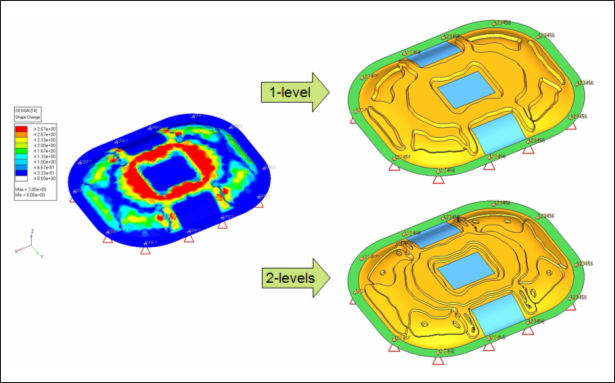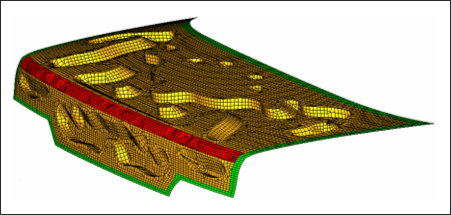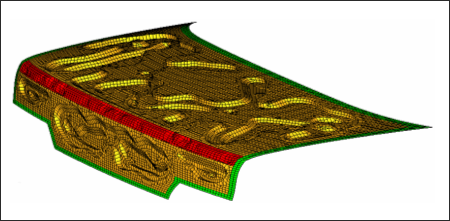Interpretation of Topography Optimization Results
The autobead feature of OSSmooth allows OptiStruct topography optimization results to be interpreted as one or two level beads.

Figure 1. Autobead Interpretation of Topography Optimization Result
Example: Autobead Result from Topograph Optimization
#general parameters
input_file decklid
output_file decklid.fem
output_code 1
#specific parameters
autobead 1 0.300 1
remesh 1
Figure 3. Autobead Result from Topography Optimization
Example: 2-Layer Autobead Result from Topography Optimization
#general parameters
input_file decklid
output_file decklid.nas
output_code 1
#specific parameters
autobead 1 0.300 2
Figure 5. 2-Layer Autobead Result From Topography Optimization